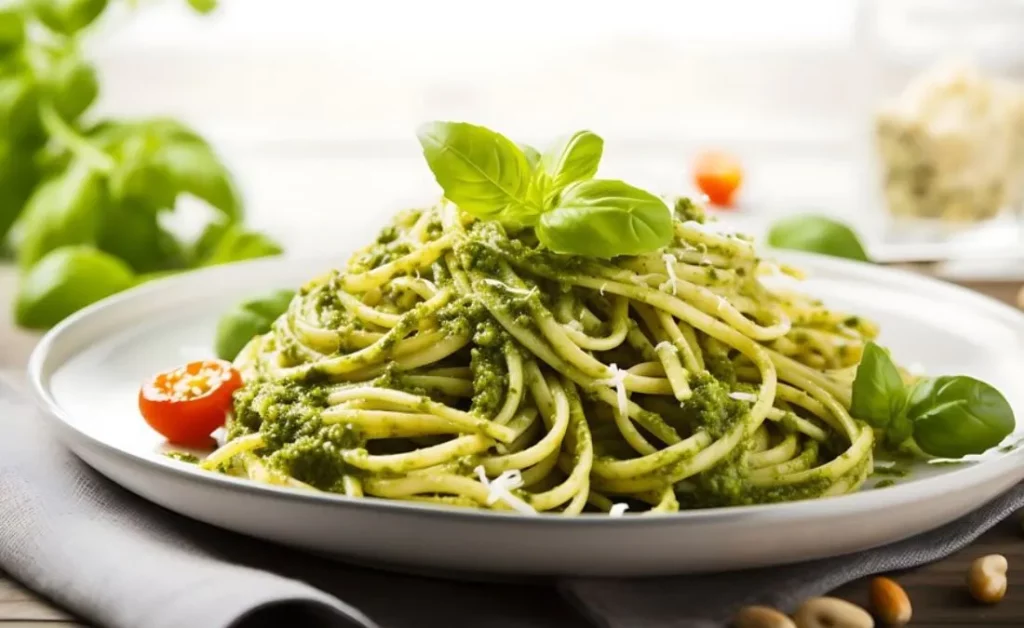Commonly known as basil, the adaptable herb albahaca has won the hearts of many with its fragrant leaves and unique taste. This article will explore the background of this popular herb as well as its medicinal and culinary applications as well as its cultural significance.
Contents
What Is Albahaca?
Albahaca, also known as Basil basilicum, is related to mint. The green, sometimes purple-tinged leaves of this plant are the star of many different cuisines. The Greek word “basileus” translates to “king,” so the name “Albahaca” is fitting given the herb’s lofty culinary status.
History and Origin
The history of Albahaca can be traced back to India, where it was considered a sacred herb. The Mediterranean region welcomed it with open arms, and it quickly became a staple in Italian cooking. Throughout history, this plant has been an essential part of many religious and cultural ceremonies.
Culinary Uses of Albahaca
Albahaca is a staple in many different kinds of food. Depending on the variety, it adds a flavor that can be either sweet or savory. Albahaca is widely used in popular Italian dishes like the Caprese salad and the Margherita pizza. Albahaca is widely used in Thai cooking, and dishes like Thai basil chicken feature it. Its flavorful leaves are a welcome addition to any dish.
Medicinal Properties
Albahaca has medicinal qualities in addition to its culinary uses. It has many health benefits due to its high levels of antioxidants and essential oils. Albahaca has anti-inflammatory, digestive, and immune-enhancing properties. Its aromatic compounds have made it a staple in alternative medicine for centuries.
Cultivation and Varieties
There are many distinct types of albahaca, each with its own flavor profile and visual characteristics. Sweet Albahaca, Thai Albahaca, and Purple Albahaca are just a few of the more well-liked varieties. The fact that Albahaca is so simple to cultivate at home only adds to its popularity among green thumbs.
How to Grow Albahaca at Home
Albahaca can be grown by those who want to cultivate it in their own homes either in containers or in gardens. It thrives in bright light, in soil that drains well, and after regular pruning. Planting, tending, and eventually harvesting your own Albahaca is a rewarding experience that pays off with fragrant new leaves.
Albahaca in Different Cuisines
The widespread use of a’lbahaca in different cuisines around the world attests to its adaptability. It enhances the flavor and aroma of a wide variety of foods, from traditional Italian pasta to traditional Indian curry. Its flexibility is a major factor in its widespread acceptance.
A’lbahaca and Pesto
The pesto sauce made with A’lbahaca is a household name. A classic sauce for pasta, sandwiches, and more, it is made by combining fresh A’lbahaca leaves with pine nuts, garlic, Parmesan cheese, and olive oil.
A’lbahaca in Folklore
A’lbahaca has been shrouded in legend and superstition for a long time. Its supposed protective properties made it a popular choice for planting near entryways to keep away ghosts. The herb’s scent was also thought to bring good luck.
A’lbahaca’s Symbolic Significance
In different cultures, A’lbahaca has symbolic significance. It has romantic overtones in some cultures. In other cultures, it is a symbol of success and wealth. Recognising these signs enhances one’s admiration for this extraordinary plant.
A’lbahaca in Aromatherapy
A’lbahaca is used in aromatherapy for the sedative and energizing effects of its essential oils. Many people find that inhaling the aroma of A’lbahaca helps them unwind and forget their worries.
Conclusion
A’lbahaca is a herb that has left an indelible mark on human culture due to its long and storied past, numerous culinary applications, and numerous health benefits. Its significance is undeniable whether it is used in a tasty pasta dish or as an aromatic therapy aid.
FAQs
- Is A’lbahaca the same as basil?
Yes, basil is known as A’lbahaca in Spanish.
- What is the best way to store fresh A’lbahaca leaves?
Put them in the fridge in a plastic bag lined with a damp paper towel.
- Can A’lbahaca be used in desserts?
Basil ice cream and other sweets infused with basil are possible uses.
- Are there any side effects to consuming A’lbahaca?
Consuming too much A’lbahaca, while not dangerous in and of itself, can cause health problems.
- How can I make my A’lbahaca plant bushier?
Pinch the growth tips on a regular basis to promote bushier growth.











